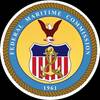Hapag-Lloyd, the world's largest shipping company, marks 50th anniversary of dangerous goods department.
According to a press release from the transnational German-based transportation company, 50 years ago, in March 1969, Hapag and Norddeutscher Lloyd set up a mutual Dangerous Goods department and became the first shipping lines with a dedicated team for safety and security on board and on land.
When the companies merged in September 1970, and became Hapag-Lloyd, the safe transportation of Dangerous Goods was already an important market segment for the new shipping line, said the cargo container shipping line.
In 2018 Hapag-Lloyd shipped roughly 480 Thousand TEU of Dangerous Goods around the world. “The transport of Dangerous Goods is a very important niche business for Hapag-Lloyd. Our worldwide customers rely on our experience, our global expertise and our consistent quality in this market segment,” says Rolf Habben Jansen, CEO of Hapag-Lloyd.
Since the 1970s, countless rules and policies have been set up worldwide to make shipping of dangerous and sensitive commodities much safer and much more efficient. Hapag-Lloyd is committed to adhering to all international requirements and has various internal regulations in place that go beyond legal obligations. The company has more than 80 employees globally who exclusively take care of Dangerous and Sensitive Goods and make sure it adheres to all of the latest safety standards.
However, rules and policies alone do not ensure safe transportation. Undeclared or misdeclared cargo has been a known issue in the shipping industry for decades. Ken Rohlmann, Senior Director Dangerous Goods, says: “Dangerous Goods transports are well planned, checked and executed by experts. The real risk we are exposed to, is a risk we can’t see: Dangerous Goods or other sensitive commodities that are not properly declared to shipping lines. We have to actively bundle our industry efforts to minimize the risk for our seafarers, assets, cargo and the environment.”
In 2012, Hapag-Lloyd has launched the “Cargo Patrol” software to address the issue of misdeclared or undeclared cargo. The program scans all incoming non-Dangerous-Goods bookings to automatically help identify possibly undeclared or suspicious cargo. Since 2017, IBM has included Cargo Patrol into its portfolio and is offering it to all parties across the Industry.



